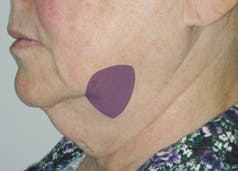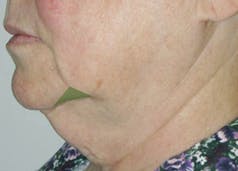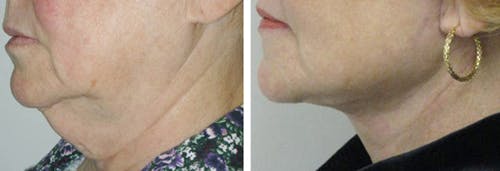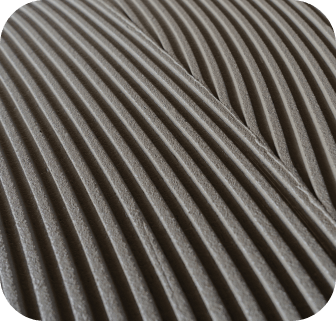
Jowls
What are Jowls?
Jowls are a technical term describing fullness along the jawline. Nancy Etcoff, author of Survival of the Prettiest: The Science of Beauty, described the universal sign of beauty is a taut jawline. However, with aging, the jawline can develop areas with dips and bulges.

Anatomically, the bulge seen along the jawline is called the jowl (see purple highlighted area, photo 1). This is typically a collection of fat, descended soft tissue, skin, and muscle which has descended with age. In front of the jowl is a dip, which is also called the pre-jowl area (see photograph 2, green highlighted area.).

Why does this develop?
With aging, the quality of the tissues change. Tissues which were once tight such as skin and the deeper structures, are now looser and more relaxed. The more these tissues relax, the more they can descend along the jawline. Gravity will logically causes these tissues to descend downward, causing more fullness along the bottom of the face and less at the top. The dip in front of the jowl, termed the pre-jowl sulcus, is thought to be the cause of two factors. First of all, as we age, we lose bone along our jawline. This bony loss leads to a more pronounced pre-jowl sulcus with age. In addition, there is a ligament called the mandibular ligament, which connects the deeper tissues of the face to the jaw. This ligament causes the difference between the pre-jowl and jowl area to be accentuated.
How are jowl treated?
It really depends on the severity of the jowls and the underlying cause of the jowls. A variety of approaches can be utilized depending on each patient’s goals and anatomy.
Jowls which occur at a young age, may be addressed with a facial filler . It may seem counter-intuitive to place more filler in an area, but by adding volume in the pre-jowl area, the difference between the dip and the bulge is lessened. Radiesse is made up of calcium hydroxyapatite, which is essentially an injectable bone. Typically, Radiesse is the filler of choice due to having excellent longevity and can be placed directly on top of the bone.
Some jowls can be liposuctioned as well. The portion of the jowl below the jawlline can be aggressively addressed. However, the portion of the jowl within the face usually is addressed much more delicately. The tissues of the face are not as amenable to liposuction as the tissues of the neck. Liposuction physically removes some of the descended fat.
A facelift (see before and after photos of Dr. Shah’s patient) is considered to be the gold standard for removal of jowls. Facelifts can reposition the descended tissue to a more youthful configuration. By placing the descended tissue back “up”, the fullness below the jawline can be improved and the patient can have a more youthful configuration to the jawline.

In some patients, the dip (pre-jowl sulcus) is so prominent, that a formal chin implant is the best choice. A chin implant allows the shape of both the chin and pre-jowl area to be improved, creating a much improved jawline in some patients.
Overall, jowls can be treated by a variety of techniques, sometimes requiring a combination for the best results.


